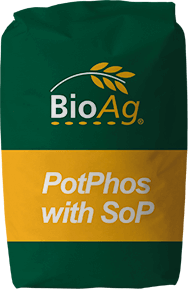Dairy
Growing, grazing and conserving feed is fundamental to the management of dairy farms. Good management is vital to optimise production and quality and reduce reliance on bought-in feed and exposure to inflated fodder and grain prices.
There are several different species of pasture and crops grown on farms across the dairy farming regions of Australia, with the choice of crop or pasture grown depending on many variables. Environmental factors influencing this decision include rainfall, irrigation availability, soil type, climate, season and temperatures. Other considerations include the class of stock being fed, the length of the feed gap, the specific nutrient profile of the crop or pasture and the availability of farm infrastructure to conserve, store and feed out the crop or pasture grown or conserved. (*Information sourced from Dairy Australia).
Specific considerations for dairy
Dairy operations typically occur where longer growing seasons are possible, either due to geography or irrigation. Maximum value is generated from feed grown on farm. However, the feed needs to be of a high quality to provide the energy required for the herd, and supply the nutrients required to prevent or reduce the incidence of mastitis, bloat, grass tetany and reduced somatic cell counts.
In addition, dairies typically need to manage effluent waste captured from milking sheds or yards. Effluent is typically captured in a pond that emits strong odours. Eventually, slurry is applied to pastures which then suffer a long withholding period.
Core to a productive pasture system is the supply of required nutrients and ameliorant to enhance the growth potential of your pastures. Each summer, soil tests should be taken in order to develop a nutrition plan, and application timings, to support pasture and fodder growth. Attention to macro and micro nutrients will ensure feed and fodder is high in energy and nutrition.
Soil and foliar biostimulants can be incorporated to improve nutrient cycling and nutrient and carbon capture, hasten recovery after grazing or harvest, and boost vegetative growth in cold months.
Effluent treatment biostimulant (Digest It for Dairy) can be applied to shed and yard floors and into effluent ponds. It promotes aerobic digestion of effluents, reducing formation of slime on floors, ammonia and hydrogen sulphide (odorous gases) in effluent, and reduces Biological Oxygen Demand of effluent. Treated effluent provides benefits by increasing the nutrient content, reducing withholding periods, and delivering improved pasture growth.
The BioAg approach
BioAg nutrition programs are incorporated into a growers current nutrition program. Our objective is to make fertiliser and other inputs work better and build and support healthy and balanced soils and plants. Programs are custom-made for each block, using advanced soil and tissue analysis. These integrated programs typically incorporate a range of BioAg solid and liquid nutrients, often associated with conventional inputs. BioAg fertility programs can be developed to meet organic certification requirements.
Soil test
An experienced and Fertcare accredited BioAg agronomist works with you and provides technical expertise on your crop. If you don’t already have recent soil test data, we arrange a soil test for you. The results provide essential information about the soil fertility and soil structure for better performance. Download the BioAg soil sampling procedure here.
A tailored program
Based on the results of soil tests, crop requirements and other factors such as soil structure, climate, history of the block, and targets that you are trying to achieve, we provide a tailored program that aims to improve soil fertility and maximise yield response. We support you through the program to ensure that inputs are applied at the right time, in the right way.
Leaf and tissue testing
Any nutritional program cannot foresee the changes in weather, disease, or pests, that may impact a crop. During the season, growers may observe issues or evidence of stress in their crop. This may be due to greater growth or yields than planned, a trace element shortage or abiotic stresses. An on-farm inspection and associated leaf or tissue tests will promptly identify any issues, which can quickly be addressed by applying the appropriate inputs. Download the BioAg leaf sampling procedure here.
High yielding crops require fertile balanced soils
Key to highly productive crops is the function of soils. Soil structure, chemistry and biology are critical in supporting crops throughout the growing season. By improving all aspects of the soil, crops will benefit from improved access to moisture, due to improved infiltration and water holding capacity, improved access to nutrition through improved nutrient cycling, fixation (for N) and a reduction in loss pathways, improved resilience to abiotic stresses and disease, improved root growth providing access to additional moisture and nutrients as well as improved carbon sequestration and a range of other benefits (click for more on soil health).
Beneficial microorganisms stimulate the plant’s root growth and help protect it from abiotic stresses. This is made possible through mutually beneficial relationships that microbes develop with plants, for example mycorrhizal associations. BioAg products programs supply essential macronutrients (N, P, K, S, Ca), trace elements (B, Zn, Cu etc.), microbial food and metabolites beneficial microorganisms that colonise root systems, improving soil function, plant health and productivity.
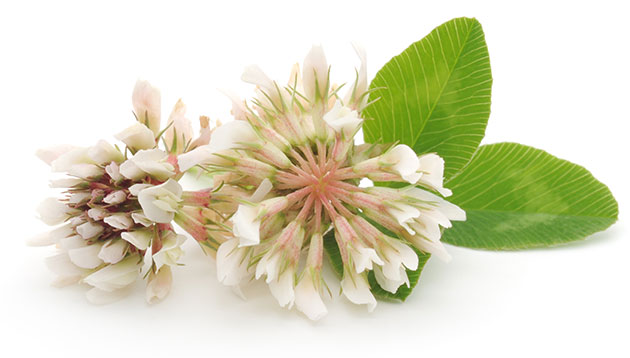
Dairy – key features of a BioAg program
The following table illustrates the cropping process and potential solutions depending on soil test results and other contributing factors. Call your BioAg Area Manager to discuss your individual needs.
Dairy resources
- Navigating Phosphate Prices
As we approach the end of 2025, phosphate prices remain stubbornly high — and many in agriculture are asking why. The answer lies in a mix of global demand shifts, supply chain changes, and local challenges that have reshaped the fertiliser market.
- Biostimulants increase yield
For the past four years, BioAg Agronomist and Area Manager Pete Emerson has been conducting a large-scale biostimulants demonstration with a grower near Brocklesby, southern NSW. The innovative grower is keen to explore ways to combat soil constraints and improve crop y...
- Soil-nutrient relationships
Nutrients, such as calcium and magnesium, may be supplied to plants solely from reserves held in the soil. Others like phosphorus and nitrogen are added regularly to soils as fertiliser to be withdrawn as needed by crops.
- Biostimulants to the rescue – enhancing fertiliser efficiency
Nitrogen Use Efficiency (NUE) is the term used to describe the effectiveness of nitrogen uptake by plants, whether it be nitrogen latent in the soil, sequestered from the air, or applied as fertiliser.
- Organic dairy case study, Sunnyside TAS
Accidentally organic. Mark and Roslyn Lambert, along with their nine children, are certified organic dairy farmers from Sunnyside in north west Tasmania. Although their transition from conventional farming to fully certified organic practices was completely unintentiona...
- Nutrient Management Planning – Dairy focus
The dairy industry is amongst the highest nutrient fluxes (inflows and outflows) for any agricultural production system and therefore has relatively low nutrient use efficiencies. The ongoing intensification of the industry also means these nutrient fluxes are continuin...
- BioAgPhos™ suits low rainfall zones
Interim results from BioAg field trials undertaken in low rainfall high-country pasture demonstrate that BioAg applications significantly increased dryland pasture production and positively changed species composition.
- Building a feed wedge
While this season’s rainfall has extended pasture growth; it is traditional that livestock operations start to run short of good pasture any time from late summer through to late winter. Spring reserves are grazed down, while cold weather reduces the amount of new vege...
Recommended products
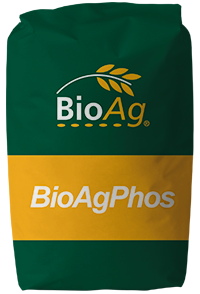
BioAgPhos
Solid Fertiliser
Highly reactive phosphate fertiliser made from high-grade reactive phosphate rock combined with BioAg’s microbial digesting agent.
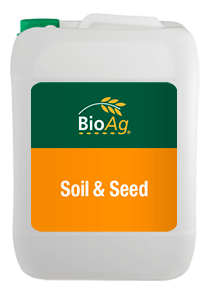
Soil & Seed
Biostimulant
Formulated to improve soil microbial activity, natural soil fertility and moisture and nutrient utilisation.
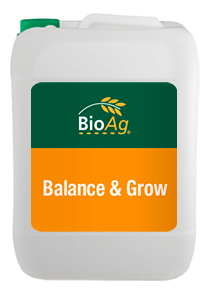
Balance & Grow
Biostimulant
Formulated to increase vegetative growth, root development and soil microbial activity. Ideal for broadacre, pastures and horticulture.
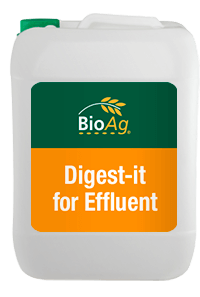
Digest-it for Effluent
Digester
Formulated to improve the breakdown of solids and the retention of nutrients in captured animal effluent. Provides a range of food sources and metabolites that promote aerobic digestion in effluent streams.

Committed to organics
With a core range of natural fertilisers and biostimulants, BioAg can offer an extensive range of products certified by Australian Organics, suitable for use in organic systems.

